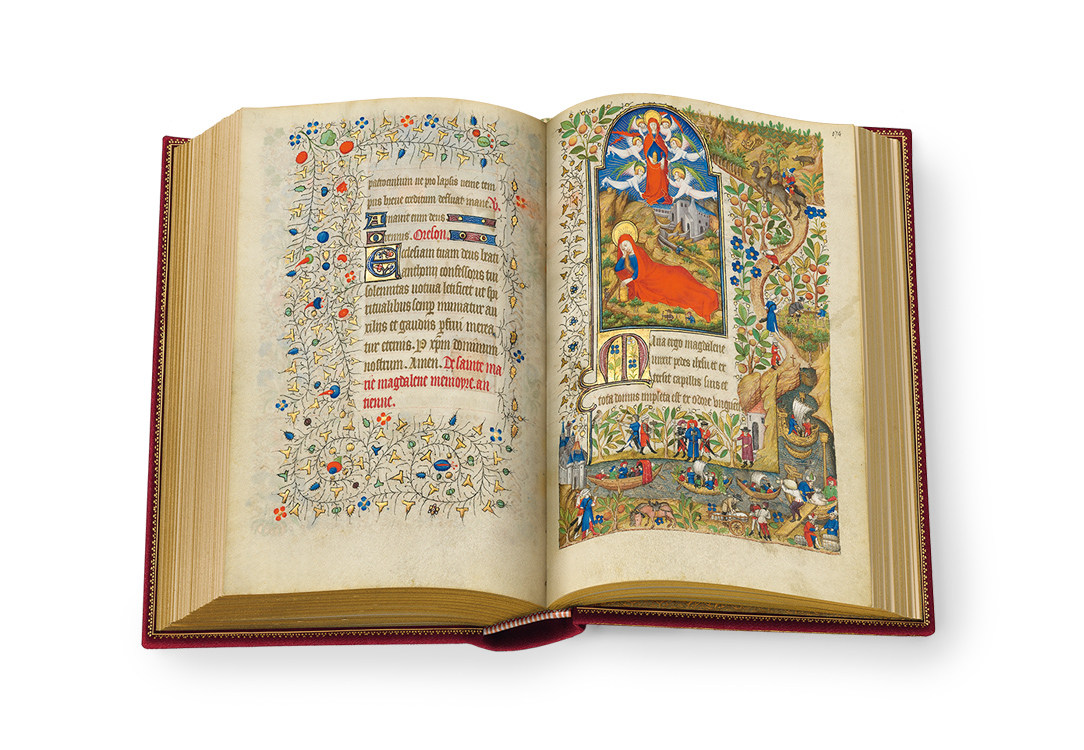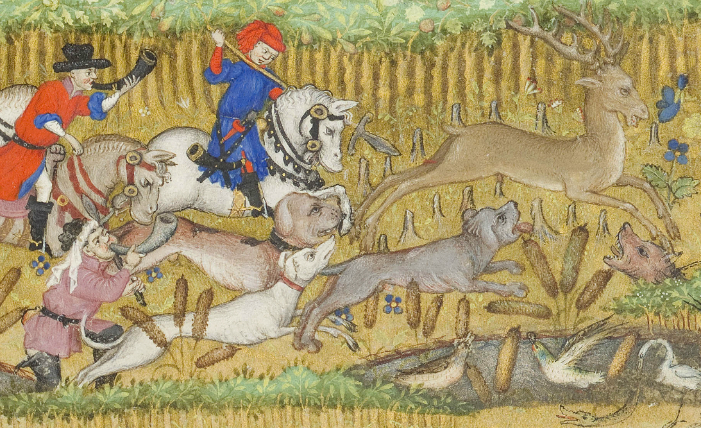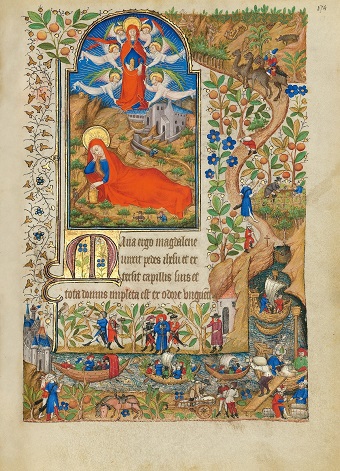The Book of Hours of Marguerite d’Orléans
Enchanting Miniatures – Border Illuminations Replete with Stories
For the viewer opening the Book of Hours of Marguerite d’Orléans, the manuscript serves as a window on the fascinating world of the late Middle Ages. Miniatures sparkling with gold and featuring elaborate border decorations captivate the enthralled viewer as he or she discovers a fantastic world. Every detail attests to the highest perfection of Gothic book illumination. The treasure binding of 1725/33 decorated with fine gold tooling is a worthy cover for this masterpiece.
“A manuscript with an immense wealth of border decoration, incredibly imaginative, melding together the art of the Limbourg brothers and that of the Boucicaut Master … decorated borders frame every page. Made around 1430, updated in the 1450s, very well-preserved, shimmering, sparkling, superb.” (Eberhard König, Freie Universität Berlin)
Stundenbuch Margarete von Orléans
The Book of Hours of Marguerite d’Orléans: The Manuscript
The Masterly Art of Book Illumination
The Book of Hours of Marguerite d’Orléans is of the highest quality. Together with the applied gold and silver, the colours form a harmonious whole. Three illustrators were responsible for the lavish and imaginative book illumination. Around 1423/26, a Breton master created the calendar medallions framed in gold. The miniatures and borders in the main section were executed by the “Master of Marguerite d’Orléans” (c. 1430), who had been trained in the circle of the Boucicaut-Master in Paris and was familiar with the work of the Limbourg brothers. His brushstrokes are so fine that even the minutest details are clearly visible. Around 1450 Étienne Sauderat from the circle of the Bedford Master added some decorative elements to this book of hours.
The Love of Books ran in her Family
Marguerite d’Orléans was the daughter of a prince, and hence a member of the French nobility. She was the granddaughter of King Charles V of France and a grandniece of his brother, Duke Jean de Berry. While the king’s book collection laid the foundation for the future Bibliothèque nationale de France, the duke was among the most notable patrons of illuminated books of his time. In addition, Marguerite’s older brother Charles, Duke of Orléans, had a penchant for poetry and is remembered as an accomplished medieval poet. Marguerite certainly shared the love of books manifest in her family. How else could you explain why one of the most original book of hours was created for her?
A Breton Wedding Gift?
It was probably in 1423 that Marguerite d’Orléans married Richard of Brittany, Count of Étampes and son of the Duke of Brittany. In that very year, her spouse would have commissioned a miniaturist in the Breton city of Rennes to illuminate the book of hours obviously intended as a wedding gift for Marguerite. As a result, the viewer can notice the personal character of the manuscript on every page. The combined coat of arms of the couple is frequently represented; and the monogram “r&m”, linked by a love knot, is inscribed in the gold background of virtually every initial. On fol. 25r, Marguerite is depicted praying to the Virgin and Christ Child.
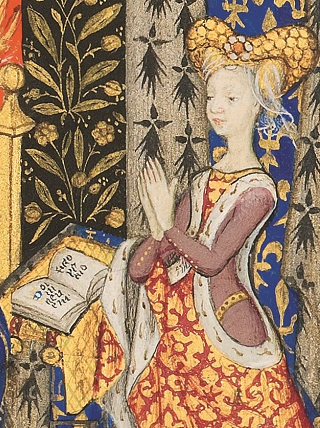
Stundenbuch Margarete von Orléans
Under the Magnifying Glass:
Border Images of Late Medieval Life
The lavishly illustrated narrative borders of the Book of Hours of Marguerite d’Orléans bear eloquent witness to everyday life in the late Middle Ages. The viewer is taken on a journey to discover knights who are jousting or fighting in battle, pilgrims on the Way of St. James to Santiago de Compostela, or peasants cutting wheat. Deer are hunted and birds are caught. The manuscript is infused with scenes of contemporary everyday life – not so much the reality but rather a somewhat wistfully embellished notion of that period. Executing the border decorations, the “Master of Marguerite d’Orléans” consistently chose not to copy conventional design patterns but made full use of his ingenuity to stage these scenes of medieval life.
The miniature of the penitent Mary Magdalene (fol. 174r) is surrounded by a border depicting an unusual subject. There is hustle and bustle at a port, which may be situated on the eastern or western coast of the Mediterranean. A train of camels moves along a path winding through the greenery. Some of the men wear turbans and carry scimitars. In the foreground is a pleasure boat sailing round the harbour. Sails are hoisted or struck on the boats in the harbour, cargoes are landed and goods removed from the quay. Perhaps the ships brought rare spices from Arabia. A wide path leads from the water into the distance, where forest dwellers and wild beasts live in faraway countries.
Stundenbuch Margarete von Orléans
The Book of Hours of Marguerite d’Orléans: The Edition
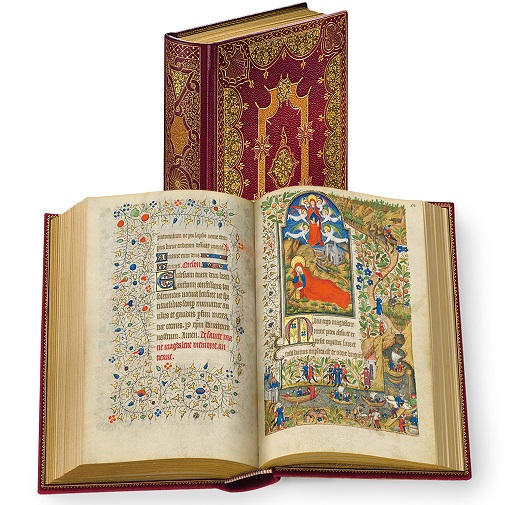
The Manuscript and the Facsimile at a Glance
Both the manuscript and the facsimile of the Book of Hours of Marguerite d’Orléans fascinate the viewer, affording an unparalleled experience of medieval book illumination. The splendour is amazing, the images creative and the artistic quality of the highest standard!
Manuscript: Paris, Bibliothèque nationale de France, Ms. latin 1156B
Date of Origin: c. 1423/26, 1430 and 1450
Place of Origin: Rennes, Bourges und Paris
Dimensions: c. 20.7 x 15.0 cm
Extent: 420 pages (210 leaves)
Artist: unknown Breton master (painter of the calendar), Master of Marguerite d’Orléans, Étienne Sauderat
Patron: Richard, Count of Étampes, spouse of Marguerite d’Orléans, Marguerite herself
Illumination: 21 miniatures, 42 historiated borders, 24 calendar medallions, text pages decorated with borders of fine foliate sprays, gold leaf and powdered gold, silver, gold tooling
Binding: four-colour leather mosaic inlay pattern with gold tooling and stylized marguerites (original by Antoine-Michel Padeloup, court bookbinder, 1725/33)
Commentary Volume for the Facsimile Edition by Eberhard König / Christine Seidel
Print run: 680 copies
Stundenbuch Margarete von Orléans
Enjoy Viewing 10 Sample Pages:
A Glance at the Facsimile
The section of the Book of Hours of Marguerite d’Orléans reproduced here shows the sequence of fols. 173r–177v.
Miniature pages with fancifully decorated borders regularly alternate with text pages.
The gold-framed miniatures depict Antony Abbot in the desert, Mary Magdalene Penitent, St. Catherine, St. Margaret, and finally, All Saints assembled in one picture.
The text pages are sparkling with gold leaf applied to the fine foliate branches of the decorated borders.
Stundenbuch Margarete von Orléans
A Challenging Production: fac simile
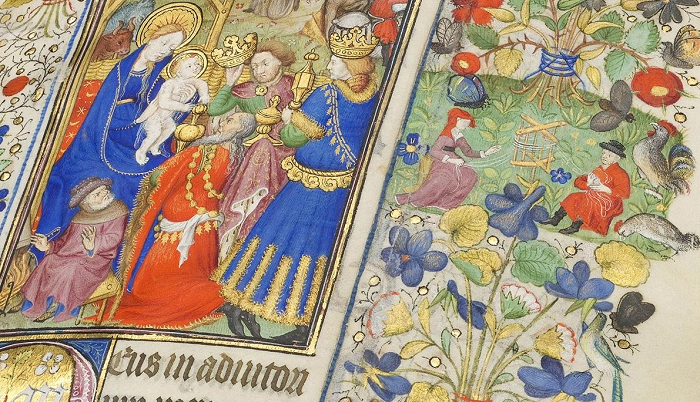
Golden Variety
The gold applied in the Book of Hours of Marguerite d’Orléans has a unique effect on the viewer. It is found in virtually all the miniatures, border decorations, initials and fine foliage sprays. Two varieties of sparkling gold leaf, as well as two types of delicately shimmering gold applied with a brush can be discovered on the lavishly illuminated manuscript pages. To reproduce with precision the nuances and the fine tooling of the gold leaf is a formidable task for facsimile specialists. Not until the subtle interplay between the gold and the colours is perfected does the facsimile appear as vivid as the original.
The Perfect Craft of Bookbinding
In the 18th century the Book of Hours of Marguerite d’Orléans received an exceptionally magnificent leather mosaic binding with the finest gold tooling. The red facsimile binding is a faithful reproduction of the original. As was the case 300 years ago, the bookbinder traditionally works with his hands. The folded print sheets are assembled in gatherings and are attached to each other at the sewing frame to form the book-block. It is protected by a headband hand-embroidered in two colours and by gilding the edges with manually applied powdered gold. This requires a steady hand and a good deal of experience. The same can be said for the mosaic pattern of coloured leather pieces laid on the front and back covers.
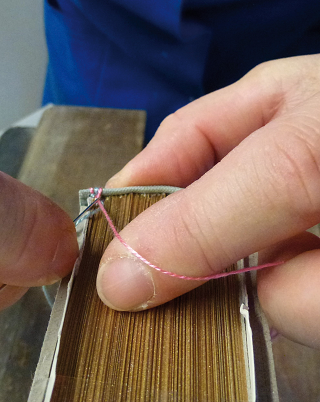
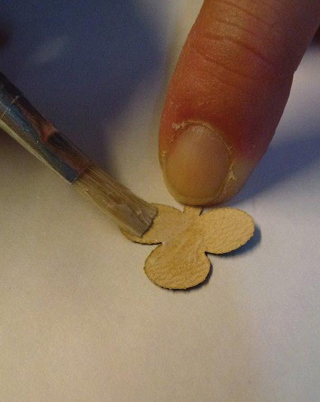
Stundenbuch Margarete von Orléans
The Facsimile Folder for the Edition
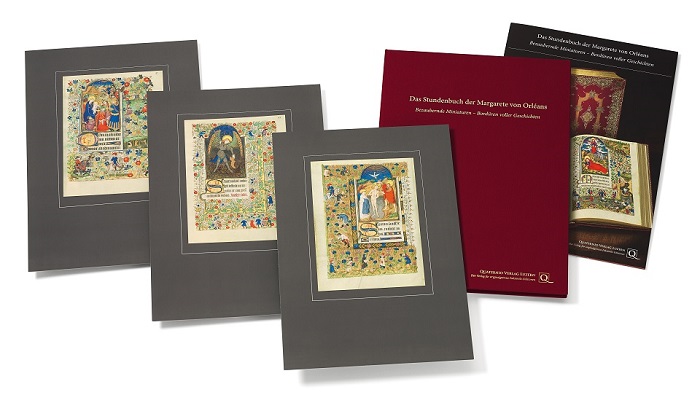
Magnificent art, wonderful details, vibrant colours and gilt decoration make the Book of Hours of Marguerite d’Orléans a great pleasure to look at. The specially produced facsimile folder allows you to have a sample of the facsimile edition made true to the original. The folder contains three original facsimile leaves showing the Adoration of the Magi, St. Michael and the Baptism of Christ in three miniatures surrounded by richly decorated borders. In a 16-page brochure, learn more about the variety of subjects represented by the illustrations, the high quality of the art of the “Master of Marguerite d’Orléans” and the historical context of this exceptional manuscript.
Stundenbuch Margarete von Orléans
Order facsimile folder
Click here to go to the online shop (German only) where you can order the facsimile folder for the Hours of Marguerite d’Orléans edition. Or send us an email to info@quaternio.ch.
Request brochure
We would be glad to provide you with additional information regarding the fine art facsimile edition of the Hours of Marguerite d’Orléans. Click here to order the brochure.




